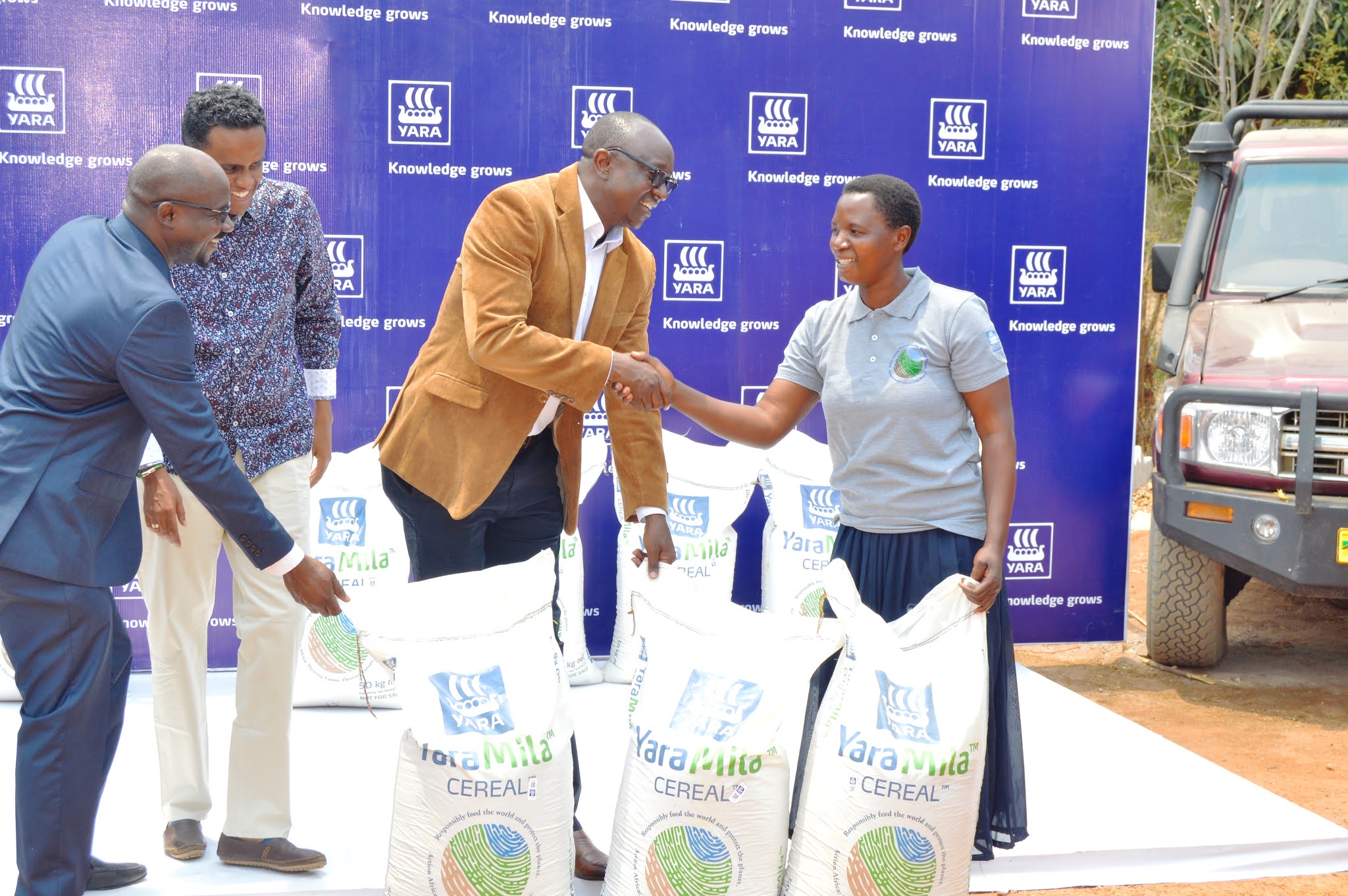Growing agricultural mechanisation boosts morale of Mbarali paddy growers.

By Paul Mahundi,Dar es salaam
Mbarali, the second largest district in Mbeya Region after Chunya, is set to increase paddy production because of growing agricultural mechanisation that is targeting smallholder growers in the district. Mechanisation is championed by the Tanzania Agricultural Development Bank (TADB).
Smallholders are Tanzania’s main growers of paddy and the government asserts in the National Rice Development Strategy Phase II (NRDS II) “around 90% of Tanzania’s rice production takes place under smallholder system. The sizes of rice farms range from 0.5 to 3 ha, with an average farm size of 1.3 ha.”
A Mbarali paddy grower who attended the just- ended 45th Dar es Salaam International Trade Fair ( DITF), Mr Amos Mwangulube, told agriculture reporters here that morale of paddy growers in their district has increased because 15 combine harvesters receive by Nguvu Kazi ya Wanavala Cooperative society will be seconded to other small paddy growers during harvesting time.
“We are very optimistic because we can visualise that laborious harvesting of rice is coming to the end in our area. We shall no longer lose our paddy in farms. The morale is high,” he declared, adding that there is a possibility of having the machines seconded to other areas lie Kyela District .
The TADB disbursed 950m/- in a soft loan to purchase the combine harvesters that were handed over to the cooperative by Agriculture Minister Professor Adolf Mkenda last month.
“I attended the Saba Saba fair because we are looking for market for our rice in Dar es Salaam city where it is popular. We have relatives here. We also plan to look for wholesalers and retailers in the Dodoma because it has a growing population,” Mr Mwangulube said, adding that he has 6-hectare farm in their family valley and has been growing paddy for the past three decades.
Mr Anangisye Mwangomale also praised the efforts of TADB towards increasing paddy production in Mbeya Region, saying growers were thrilled by arrival of the harvesters. Morogoro and Mbeya Regions are Tanzania’s major paddy growing regions and the government says the average paddy yields in the 2016/17 cropping season in the two regions were 4.0 and 2.2 tonnes per hectare respectively.
Further Mbarali District has the highest percentage of power tiller use (3.1%) in the region, followed by Mbeya Rural District with 0.9 percent. Mbarali is also second use of oxen (17.2) next Momba District (29.2%) and the second of user of ploughs (17.3%), again next to Momba 32.1 percent. Mbarali has also the highest connectivity --- mobile phone use stands at 62.1 percent next to Mbeya Urban District with 81.1 percent.
The Chairman of Umoja wa Wakulima wa Mpunga Mbarali, Mr Wilbart Mbwiga, said over the phone yesterday that the harvesters will be used equitably among members during the harvesting season. “What is important is that the machines should be used very carefully to promote productivity and last long,” he said.
Mr Anangisye Mwangomale , a prominent paddy grower who is said to be harvesting seven bags in a hectare, said the paddy acreage is set to increase in the district because of growing mechanisation.
In the NRDS II government says “from 1995 to2014 the area under rice and production at national level increased by 57 and 76 percent respectively. Increased production has gradually reducfed the need for imports and rice-self sufficiency had been attained in the recent years.”
The government names Shinyanga, Tabora, Mwanza, Mbeya, Rukwa and Morogoro Regions as producers of 70 percent of Tanzania’s rice. Other producers are Songwe, Katavi, Arusha, Kilimanjaro, Kigoma, Manyara, Iringa, Mara and Tanga.
Ends//.




Comments
Post a Comment